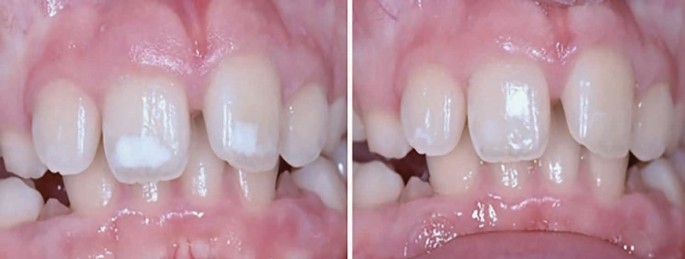
By Dr Niecoo Tajmehr
Minimally invasive dentistry and the millennial generation
The practice of minimally invasive dentistry is a relatively recent change in approach for dental professionals, with a significant amount of positive evidence becoming available on the subject, especially in the last ten years.1 Novel techniques and materials are fast being developed for dentists to keep up with the demands of a patient population who are increasingly concerned about the appearance of their teeth. With a rise in social media many patients wish to not only preserve their dentition but enhance it. As a young dentist, it's not difficult to see that our current population's expectations of dental treatment are vastly different to what our predecessors who graduated 20-30 years ago faced. With this in mind, it is vital that we as dental professionals stay up to date with new dental innovations.
So what is ICON?
The ICON (Infiltration CONcept) was designed as a minimally invasive resin infiltration system for treating incipient caries in patients of all ages.2 The low viscosity unfilled resin, developed by the company DMG (Germany) camouflages white spots by means of optical manipulation, and no tooth tissue removal is strictly necessary.
The clear resin flows into the demineralised enamel, and has similar optical properties (similar refractive index) to the enamel, therefore reflecting light to match the the tooth's natural shade.3,4,5
What is a white spot?
White spot lesions are white opacities seen on teeth after the subsurface layer of enamel on a tooth becomes demineralised, often due to poor oral hygiene and plaque, bacteria and acid accumulation on teeth. The decalcified inner enamel remains trapped underneath remineralised surface enamel. The inner demineralised enamel scatters the light due to its irregular microstructure and the result is an opaque white appearance of the tooth.
White spots can also occur on the teeth due to:
Dental fluorosis (a high fluoride intake as the adult teeth are developing)
Congenital hypomineralisation of teeth, due to infection or trauma as infant
Molar incisor hypomineralisation (lack of enamel development during its maturation stage, which affects the molar and incisor teeth)
Decalcification of enamel due to fixed braces (inadequate oral hygiene around the plaque retentive orthodontic brackets).
Working in a dental hospital, white spot lesions on anterior teeth are a common presentation that I see on the paediatric department. However, patients will usually present to their primary care practitioner first. Patients of any age can attend your surgery wishing to hear the options for treatment of their white spots, and it is important to be able to distinguish the cause of the white spot, in order to provide the best treatment outcome. If uncertain, a referral for specialist opinion is recommended.
Aesthetic treatment of white spots
ICON resin infiltration
Tooth bleaching*
Enamel microabrasion
Direct composite resin bonding/veneers
Indirect composite/porcelain veneers*
In severe cases indirect porcelain crowns may be indicated*.
*These treatments are not suitable for children under age of 18 years of age, due to the developing dentition, and the EU regulations for dental bleaching.
A common misconception by dental professionals and patients is that some white spots may be successfully treated with bleaching alone. However, although the overall colour of the tooth will improve, the white spot will remain unchanged and can sometimes even look worse compared to the whiter natural tooth.
A substantial thickness of composite may be required to fully mask a larger white lesion, which can leave the tooth looking bulky. Furthermore, composite and porcelain veneers may require tooth surface preparation which is irreversibly destructive to the tooth.
How is ICON used?
The resin is applied as part of three-part technique.2 The use of rubber dam is essential to protect the soft tissues. Pre and post-operative photographs are important as part of your record keeping process.
1. Apply Icon-Etch (HCL gel)
Directly onto white spot for two minutes
Agitate, remove with water, gently air dry
2. Apply Icon-Dry (ethanol)
Directly onto white spot
Air dry after 30 seconds
This can be repeated up to five times, until the patient is happy with the appearance of the tooth
3. Apply Icon-Infiltrant (unfilled resin)
Directly onto white spot
Remove excess material and allow to set for three minutes
Light cure each surface for 40 seconds
Repeat infiltration once more with a new tip, remove excess and allow to set, then light cure
Polish as necessary.
The flow chart in Figure 1, produced by DMG Dental, outlines the process for ICON.
Discussion
ICON has shown in cases that aesthetic results can be delivered on white spots in a minimally invasive way.3,4,5,6 This technique should always be used in conjunction with an intensive prevention plan including oral hygiene and diet advice, fluoride varnish placement and regular dental review. Although long term clinical data on this product are limited in the literature, use of this technique is a step forward in allowing patients of all ages to access aesthetic treatment of their white spots, which can significantly impact on their confidence and wellbeing. See Table 1.
Dental professionals should continue to strive for clinical excellence and improving patient experiences by means of keeping up to date with current and new research in the dental field.
Acknowledgements
With special thanks to Professor Helen Rodd, Professor/Honorary Consultant in Paediatric Dentistry, the University of Sheffield, and Dr Noren Hasmun, who kindly provided permission for use of clinical photos from her PhD research conducted at the University of Sheffield, UK.
References
Frencken J E, Peters M C, Manton D J, Leal S C, Gordan V V, Eden E. Minimal intervention dentistry for managing dental caries - a review: report of a FDI task group. Int Dent J 2012; 62: 223-243.
DMG Dental. ICON smooth surface - case reports. 2019. Available at: https://www.dmg-dental.com/fileadmin/user_upload/Germany/products/Icon_vestibular/Casebook_IconVE_07022019_en.pdf (accessed 5 December 2019).
Cazzolla A P, De Franco A R, Lacaita M, Lacarbonara V. Efficacy of 4-year treatment of icon infiltration resin on postorthodontic white spot lesions. BMJ Case Rep 2018; doi: 10.1136/bcr-2018-225639.
Manoharan V, Arun Kumar S, Arumugam S B, Anand V, Krishnamoorthy S, Methippara J J. Is resin infiltration a microinvasive approach to white lesions of calcified tooth structures? A systemic review. Int J Clin Pediatr Dent 2019; 12: 53-58.
Omar S. Using resin infiltration to treat developmental defects of enamel. Three case reports. J Restorative Dent 2013; 1: 31-35.
Shivanna V, Shivakumar B. Novel treatment of white spot lesions: a report of two cases. J Conserv Dent 2011; 14: 423-426.
Author information
Authors and Affiliations
Rights and permissions
About this article
Cite this article
Tajmehr, N. A minimally invasive treatment for white spots on teeth. BDJ Team 7, 20–23 (2020). https://doi.org/10.1038/s41407-019-0212-5
Published:
Issue Date:
DOI: https://doi.org/10.1038/s41407-019-0212-5



